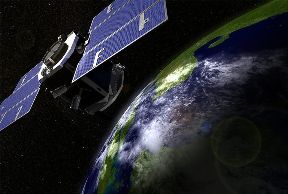The Russian orbital satellite constellation organized round-the-clock operational monitoring of flood conditions and natural fires on the territory of the Republic of Crimea; During the reporting period, monitoring of floods and landslides in Brazil was carried out, reports the Roscosmos press service.
The Roscosmos State Corporation maintains operational cooperation with the Russian Ministry of Emergency Situations for a timely response to the occurrence of a flood and fire hazard situation and the implementation of space monitoring of the affected areas.
At the Russian astrophysical observatory “Spektr-RG”, for more than a thousand days in a row, without days off or holidays, the eROSITA and ART-XC telescopes named after M. N. Pavlinsky transmitted data on merging clusters of galaxies and very powerful young quasars, remnants of supernova explosions and stellar “nurseries”, discovered atypical microquasars and blinking supermassive black holes. And, of course, they fulfilled their main task – they built new, more detailed X-ray maps of the entire sky.
The very first survey doubled the number of sources known in the sky, and since then three more complete scans of the sky have been completed. The Navigator platform and scientific equipment are also working, deep space communication centers are working, receiving data from on board, ballistic centers and a control service are working, calculating the orbit and supporting the functioning of the service systems of the spacecraft, scientists are working, analyzing the data received.
Scientists from the Samara National Research University named after S.P. Korolev have developed a nanosatellite that will monitor the state of the ionosphere – the upper layer of the earth’s atmosphere. The data obtained by the satellite will be useful for solving problems regarding the further development of the Arctic and Antarctic. Among the features of the satellite is its unique scientific equipment. On board SamSat-ION there will be a navigation receiver, an external magnetometer on a rod of an original design and a plasma parameters sensor jointly developed by Samara University and the Institute of Applied Physics of the Russian Academy of Sciences, which allows measuring the characteristics of plasma along the orbit of motion.
Last week, the Russian Government approved the Federal Project “Sphere”. “Sphere” is a project of a global multifunctional information and communication satellite system (GMISS), which includes space projects in various fields, including 334 communication satellites, 55 navigation satellites and 249 remote Earth imaging satellites. The development of Sphere will also make it possible to organize mass movement of drones in Russia both in the airspace and on the ground.
Roscosmos is currently creating a national operator of promising orbital constellations, Sfera, in partnership with existing Russian operators – Federal State Unitary Enterprise Space Communications and Gazprom Space Systems.





